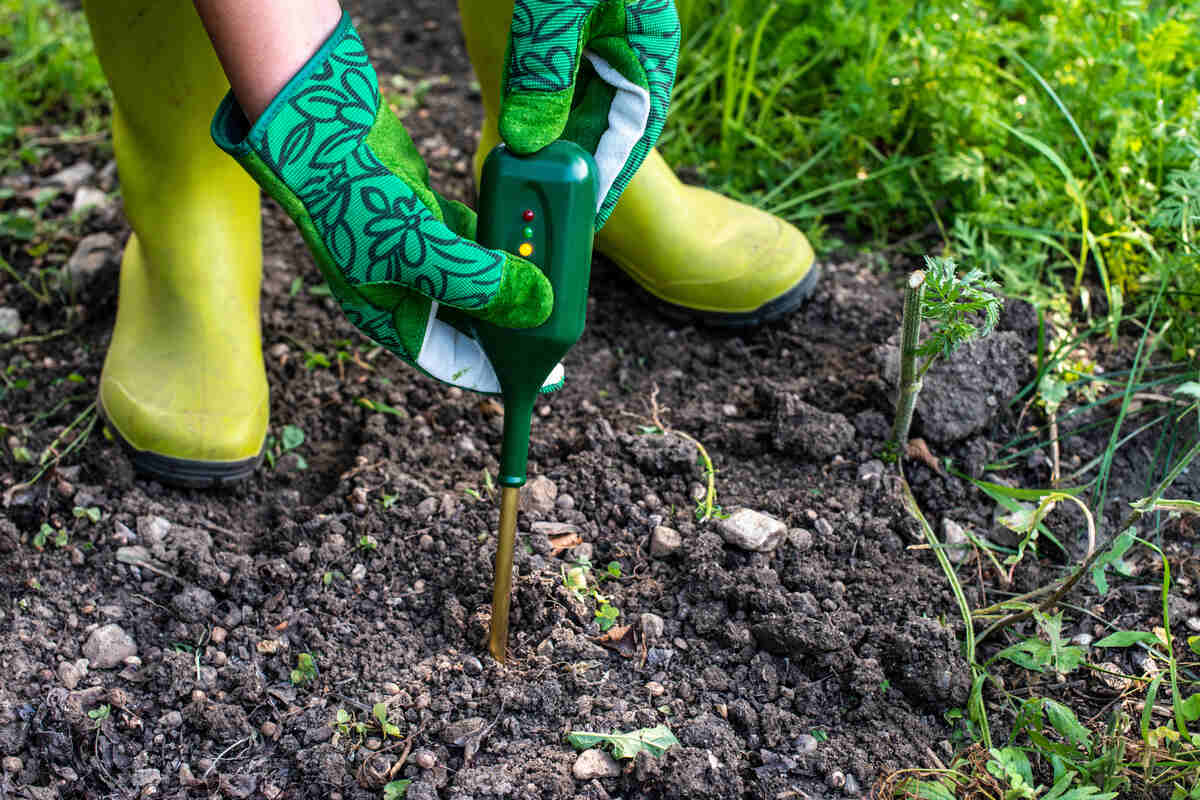
Using an at-home soil test kit is a straightforward and cost-effective way to analyze your soil’s composition. Simply collect soil from different areas of your lawn, remove any debris, and mix it to form a composite sample.
Then, follow the kit’s instructions to mix the soil, water, and a color-changing reagent, and compare the results to reference charts to measure the soil’s pH, nitrogen, phosphorus, and potassium levels.
I promise you, using a soil testing kit is a simple task. It’s like an adult version of those chemistry lab sets we had when we were growing up. And it’s a project that’s worth the time and money if you don’t want to pay for professional analysis. With insights on your soil, you’ll be able to help your lawn thrive.
What’s a Soil Test and Why is Soil Testing Important?
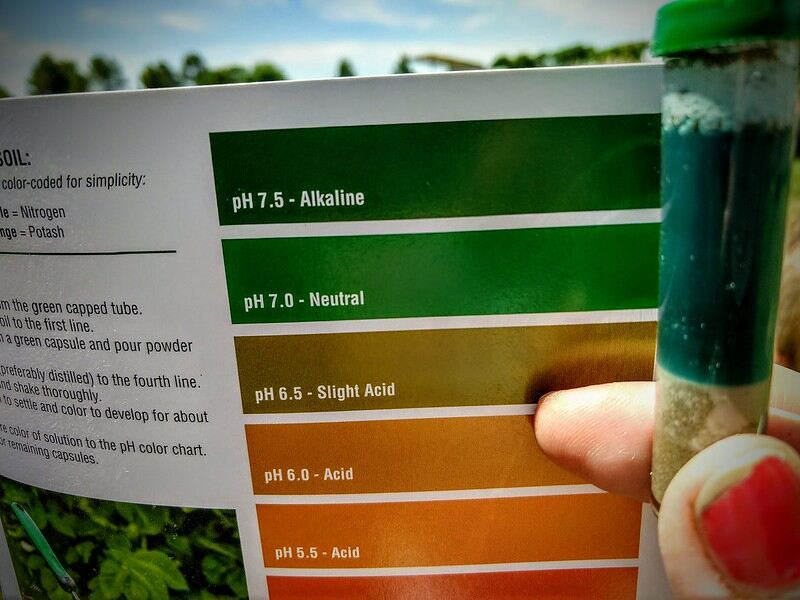
A soil test is a chemical analysis used to determine the composition and quality of soil, especially for agricultural or gardening purposes.
Soil testing is like giving your lawn a health check-up. It reveals essential details, helping you tailor your lawn care to its specific needs. Without this information, you might be wasting time and money on ineffective treatments.
A soil test:
- Identifies nutrient deficiencies or excesses
- Determines soil pH level (acidity/alkalinity)
- Helps avoid over-fertilization, which can harm plants and waterways
- Provides a baseline for monitoring soil health over time
- Saves money by applying only necessary soil amendments
Soil testing also helps prevent problems before they start. By understanding what your soil lacks, you can avoid issues such as nutrient deficiencies and pH imbalances that can lead to poor grass growth and lawn diseases.
For more in-depth reasons why you should be routinely testing your soil, check out our article: “Reasons Why Soil Testing Is Important For the Lawn.”
Pro Tip: To have someone else take care of this chore, hire a landscaping professional to take a soil test and interpret your results.
Step-By-Step Guide to Using a Soil Testing Kit
Gather Your Materials
Start by pulling together everything you’ll need. Your soil test kit may include additional specific items, but you will need the following basics.
- Soil testing kit
- Garden trowel, spade, shovel, or soil probe (avoid using rusty equipment if possible)
- Clean plastic bucket
- Distilled water
- Paper and pen for recording results
Collect Samples
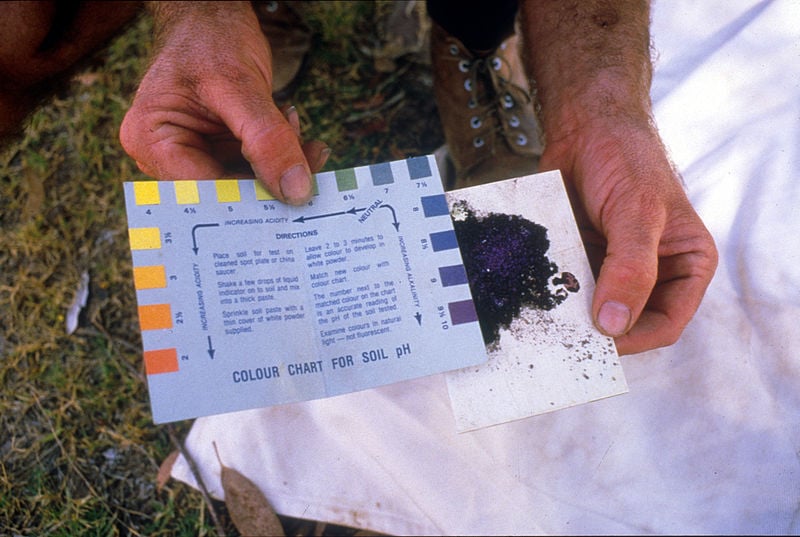
The goal of sampling is to collect soil from several spots in your yard and mix it. You’ll then take a small portion of the composite sample and test it.
To get a representative sample, select 6 to 20 random spots, depending on the size of your lawn. Obviously, with a bigger yard, you’ll take more samples. For my smaller, quarter-acre (ish) suburban lot, I typically take 8 samples when testing my lawn soil — 6 from the back and 2 from the front — and another 6 to 8 for my garden soil.
My Tip: Avoid sampling areas that are considerably different from the rest of the yard or garden. Such as where your compost pile used to be, places that always have standing water, or a corner the neighborhood cat likes to use as a litter box. These spots will skew the results of your representative sample. If you want information on them, sample them separately.
Before you get started, clean your garden trowel, soil probe, or shovel. Scrub any caked-on dirt or mud off it, and wipe it down with rubbing alcohol or a disinfecting wipe to minimize the risk of cross-contamination.
Dig a small hole at each of the spots, and then take a small slice from the side of the hole, using that slice as your sample. If you’re sampling with a probe, push it straight down into the soil and pull it straight back up, removing a core. Place the collected soil in the bucket.
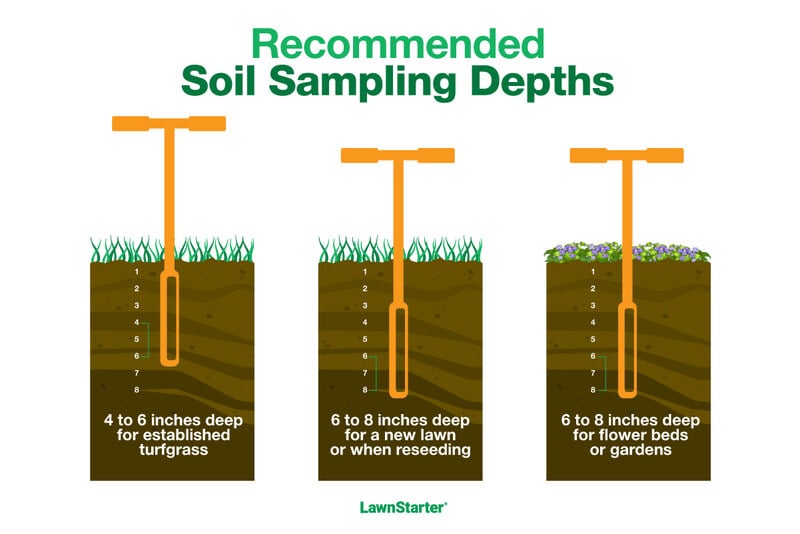
- Dig 4 to 6 inches deep when sampling under established turfgrass.
- Dig 6 to 8 inches deep when sampling for a new lawn, or if you’re reseeding.
- Dig 6 to 8 inches deep when sampling flower beds or gardens.
You can read more about sampling in our guide: “How to Prepare a Soil Sample.”
Prepare Your Sample
The following is a general way of preparing samples for testing. Always follow the instructions listed in your specific soil test kit. It’s not necessary, but I’ve found the soil is easier to work with if you let it air dry.
- Remove any rocks, roots, plant material, or other debris from the composite sample.
- Thoroughly mix the soil in the bucket with your hands or a trowel, breaking up as many large clods as possible.
- Lay some sheets of newspaper across the table, counter, or floor, spreading the soil out in a thin layer.
- Allow the soil to air dry for 24 to 48 hours.
- Mix the soil on the newspaper, break up remaining clods, and then put 2-3 cups of it in a plastic zip-top bag.
My Tip: I previously used a sand strainer from my kids’ beach toys to sift out rocks, roots, and bigger soil clumps after letting the soil dry. Unfortunately, though, I couldn’t find it this year, so I used a cheap colander from the dollar store.
Analyzing the Soil
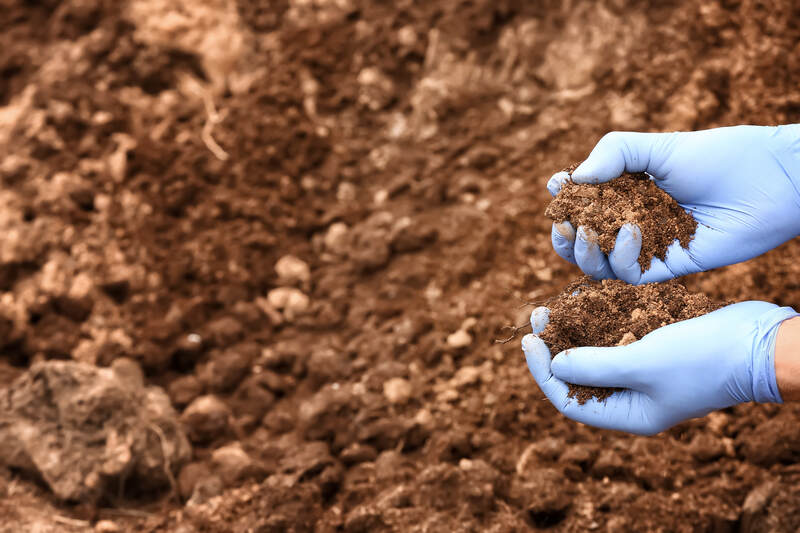
These instructions are for the Luster Leaf Rapitest Soil Test Kit. Other kits may vary slightly.
Testing Soil pH
- Fill the test chamber to the soil fill line with your sample.
- Carefully separate the two halves of the pH testing capsule and add the powder to the test tube.
- Use the dropper to add water to the water fill line.
- Cap the compartment and shake vigorously until well mixed.
- Allow the soil to settle and the color to develop for approximately 1 minute.
- Compare the resulting sample color to the pH reference chart.
Testing Soil Nutrients (N, P, and K)
- Combine 1 cup of your soil sample and 5 cups of water. Shake or stir the mixture for about 1 minute, and then let it settle. Depending on your soil type, this can take from 30 minutes to 24 hours.
- Use the dropper to transfer the solution from the soil sample to the N, P, and K test compartments, filling them to the water fill line. Try to transfer only the liquid and avoid disturbing the sediment.
- Carefully separate the two halves of each testing capsule and add the powder to the color-coordinating test compartment.
- Cap the compartment and shake vigorously.
- Allow the color to develop for 10 minutes.
- Compare the resulting sample color of each compartment to the coordinating reference chart.
Interpreting Test Results
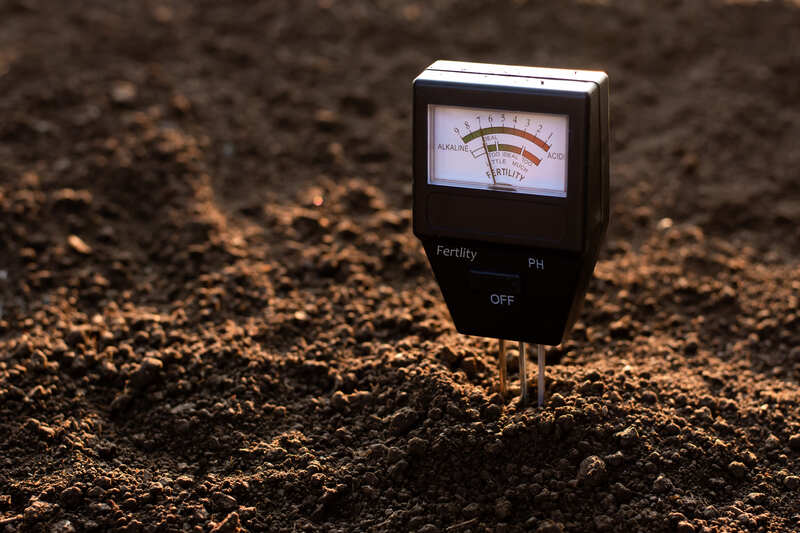
When using an at-home soil testing kit, interpreting the color comparison results is a critical step. The results directly influence whether you apply fertilizer or adjust the soil pH, and by how much, making it imperative to follow the directions.
Depending on the soil test kit you purchase, the instructions may include recommendations for adjusting soil pH and fertilizer amounts based on your results.
| pH Test | Blue/purple colors usually indicate alkaline soil (above 7.0) Green often indicates neutral soil (around 7.0) Yellow/orange colors typically indicate acidic soil (below 7.0) |
| Nitrogen (N) Test | Pale pink/purple or no color change indicates low nitrogen Medium to dark pinkish purple indicates moderate to high nitrogen |
| Phosphorus Test | Light blue or no color indicates low phosphorus Medium to dark blue indicates moderate to high phosphorus |
| Potassium Test | Clear or slight yellow to orange color indicates low potassium Medium yellow to orange indicates moderate to high potassium |
Tips for Accurate Results
- Make sure all of your equipment is clean before collecting soil samples.
- Collect samples in a randomized pattern across the entire area.
- Follow the kit instructions carefully, especially regarding processing times.
- Use distilled water to mix the samples. Tap water may contain minerals that affect the results.
- Read the results in natural daylight instead of under artificial lights, which can distort colors.
- Follow the exact times in the test kit’s instructions. Reading results too early or too late can lead to inaccurate interpretations.
- Place the color chart and your sample on a white background to reduce color distortion.
- Hold the test tube or container next to the color chart, not on top of it, for the most accurate comparison.
- If the color falls in between two reference colors, record the results as a range between the two values.
FAQ About Using a Soil Test Kit
Generally, you should test your lawn and garden soil every 2 to 3 years. Routine testing helps you monitor changes in your soil, such as nutrient deficiencies or pH imbalances, and adjust your lawn care practices accordingly before they become serious problems.
However, certain situations call for immediate soil testing, regardless of when you tested it last:
• If you’re establishing a new lawn, test the soil before planting grass seed, so it has the right (available) nutrients for your grass to thrive.
• If you’ve made significant landscaping changes, such as adding new plants or soil amendments, it’s a good idea to test the soil to see if the changes affected it.
• If you’ve had construction work done on your property, test the soil afterward. Construction can disturb soil layers and compact the soil, affecting its health and structure.
• If your lawn shows signs of stress, such as yellowing grass, poor growth, or patchy areas, a soil test can help diagnose the issue and guide you to the right solution.
The best time to test your soil is in the fall, as your lawn is going dormant for the season, or early in the spring before it starts growing. Of the two, sampling in the fall gives you more time to amend the soil if needed, apply fertilizer, and give your products more time to work before your grass comes out of dormancy.
At-home soil test kits are available at most places where you can buy lawn and gardening supplies. They are found at online retailers like Amazon, local nurseries, hardware stores, and big-box retailers such as Walmart, Home Depot, and Lowe’s.
Let a Lawn Pro Help With Your Soil Testing Needs
Regular soil testing might seem like a chore, but it’s a small effort that pays off big in the health and beauty of your lawn. By learning how to test your soil and staying on top of its needs, you’ll keep your grass thriving and your lawn looking its best.
But maintaining a beautiful lawn doesn’t stop at soil testing. Consistent care, including proper mowing, watering, and fertilizing, is essential. If you ever feel overwhelmed or need expert advice, don’t hesitate to contact LawnStarter. We’ll put you in touch with a local lawn care professional who can help you achieve a lush lawn you’ll enjoy all year round.
LawnStarter participates in the Amazon Services LLC Associates Program and other retailer affiliate programs. LawnStarter may earn revenue from products promoted in this article.
Main Photo Credit: Deyan Georgiev / Adobe Stock Free / License